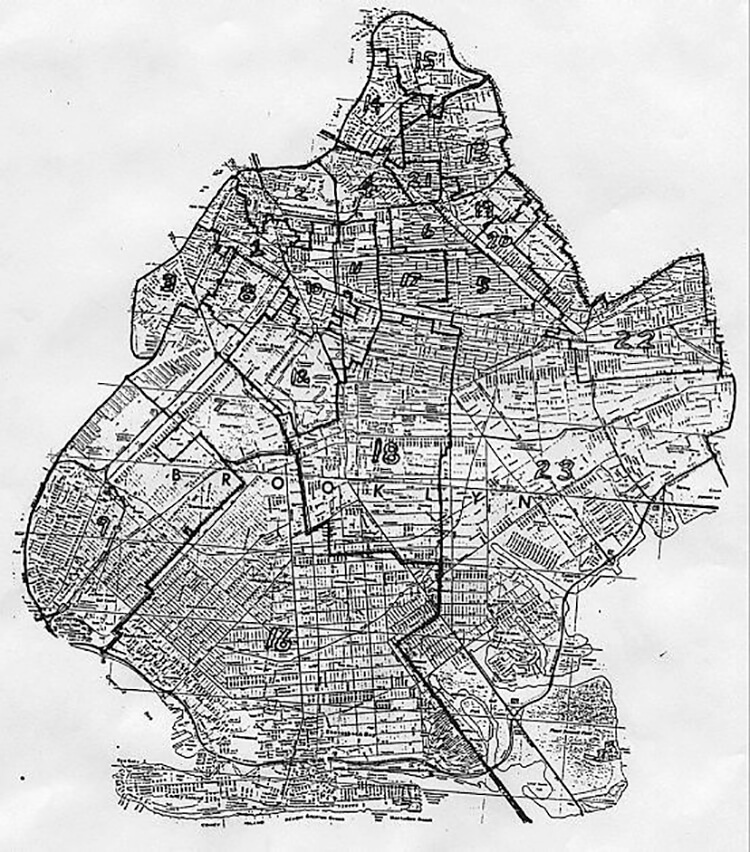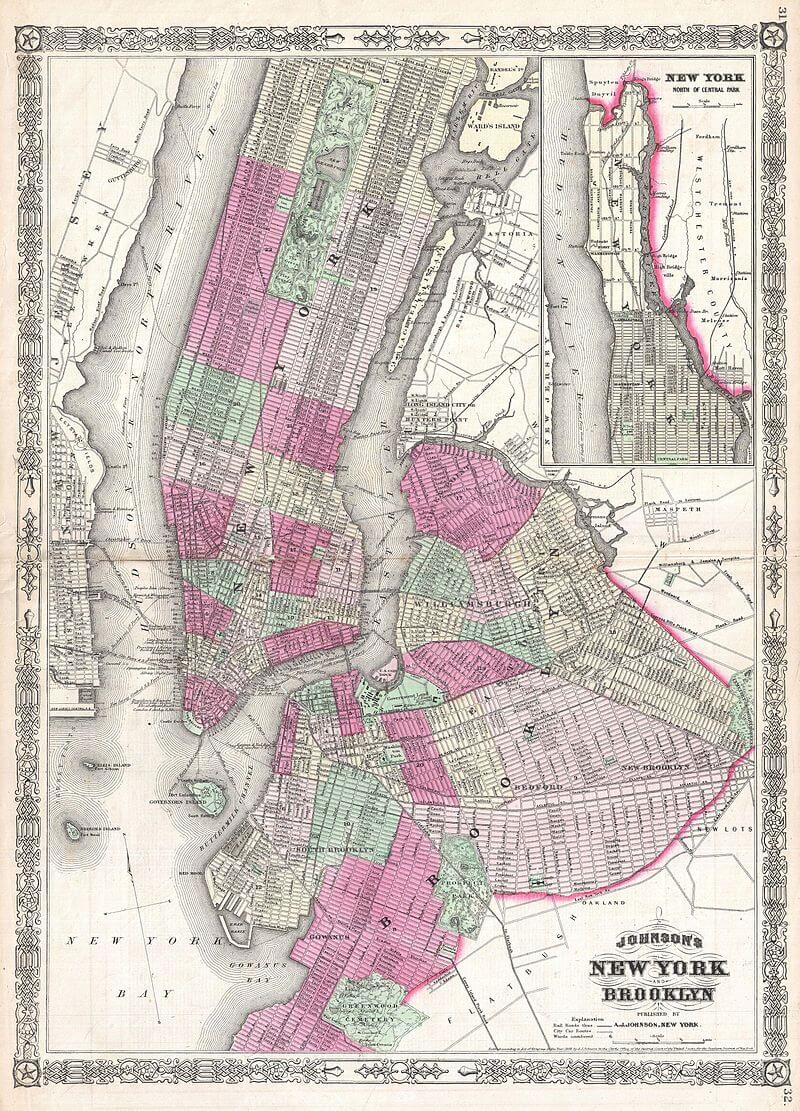Brooklyn's Forgotten Electoral Districts: The Lost History of the Ward System
There are invisible, forgotten lines dividing Brooklyn in the form of the borough’s long unused ward system, an early version of today’s assembly and electoral districts.

An 1893 map of Brooklyn Heights, Brooklyn’s first ward. Map via Brooklyn Genealogy
There are invisible, forgotten lines criss-crossing Brooklyn, long-lost borders dividing the borough into a series of numbered neighborhoods: Brooklyn’s wards.
Wards are the historic equivalent of today’s electoral districts: boundaries used in elections to designate voters to certain areas.
Some U.S. cities have maintained at least a portion of their ward designations — like New Orleans with its Katrina-decimated Ninth Ward, or Houston and its six historic wards — but Brooklyn today has only the barest reminders of its ward-divided past. One of the last hints of this history is the now-defunct 3rd Ward art space that once operated in East Williamsburg.
Yet, wards once played an outsized role in Brooklyn’s politics, representing voting districts and changing their borders and quantity to match Brooklyn as it grew.
In 1839, Brooklyn had nine wards. By 1898, that number had boomed with the city’s population to 32.

In 1915, Bed Stuy composed the 23rd and part of the 7th and 9th wards, Greenpoint was spread out over wards 8, 14, 15 and 17, and Brooklyn Heights was contained in wards 1 and 3, maps show.
The wards were very confusing, not seeming to follow any logical gridded boundary or numbering system, subdividing as Brooklyn’s population grew.
Even the papers seemed to have a hard time keeping up: “Gravesend Is in Now,” reads a Brooklyn Daily Eagle headline from 1894, “New Utrecht Will Follow in July. Flatlands Must Wait Until January 1, 1896.”
Counterintuitively, Gravesend was made the 31st ward before New Utrecht was made the 30th.
The Daily Eagle article goes on to explain the reason for the staggering of ward initiations was because of complications with the constitutional debt limit, a constraint concept that still exists today and limits the amount of debt a local government is allowed to incur.

Brooklyn stopped using wards in the early 20th century, and the system was formally abolished in 1938 according to Brooklyn Genealogy.
It took time for the term to leave the popular vocabulary, however. After the ward system was abandoned, electoral districts and assembly districts took its place.
Today, Brooklyn has 21 assembly districts.
Related Stories
5 of Brooklyn’s Worst Disasters, From the Subway to the Sky
A Sandhog Recalls Being Shot Out of a Brooklyn Heights Subway Tunnel
Demolished, Abandoned or Repurposed: Remembering Brooklyn’s Lost Subway Stations
Email tips@brownstoner.com with further comments, questions or tips. Follow Brownstoner on Twitter and Instagram, and like us on Facebook.









What's Your Take? Leave a Comment